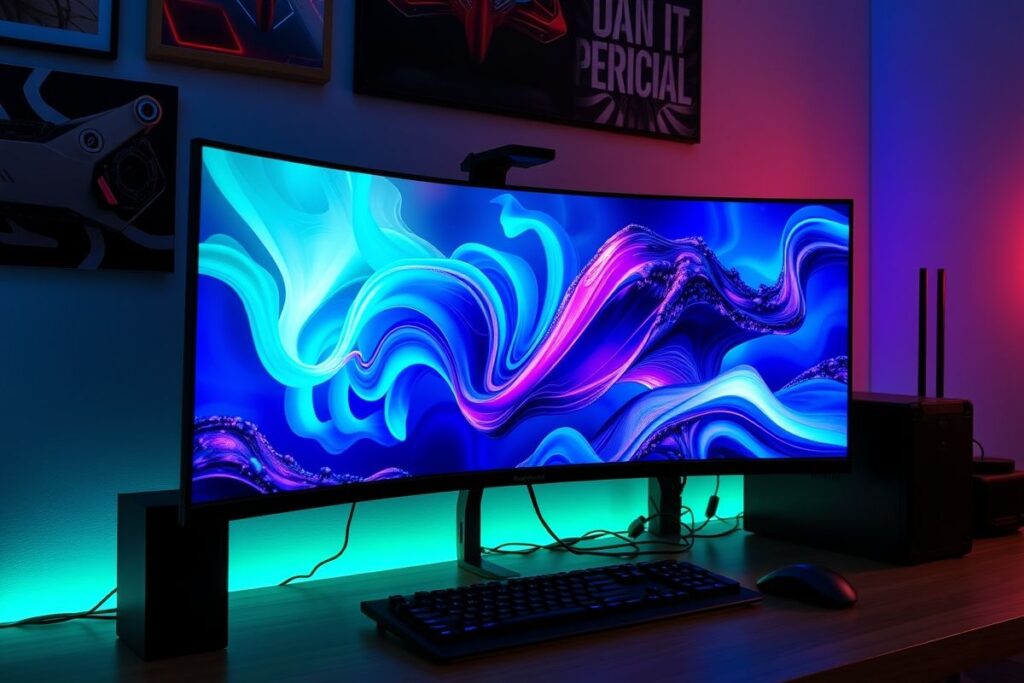How to Pair an OLED Display with a Thrifty Gaming Setup
OLED displays have long been considered the pinnacle of gaming visuals, offering unparalleled contrast, vibrant colors, and lightning-fast response times. However, their premium price tag often relegated them to high-end builds, leaving budget-conscious gamers yearning for the OLED experience. Fortunately, recent market trends have made OLED technology more accessible than ever, allowing gamers to integrate these stunning displays into even the most thrifty setups. This article will explore how to effectively pair an OLED display with a budget-friendly gaming rig without compromising performance or breaking the bank.
Building a budget-friendly gaming PC capable of driving an OLED display requires careful component selection and strategic planning. By focusing on value-oriented parts and understanding the performance requirements of your desired resolution and refresh rate, you can create a compelling gaming experience without emptying your wallet. This guide will help you navigate the process, offering insights and recommendations to maximize your gaming potential on a budget.

Choosing the Right OLED Display
Size and Resolution
Selecting the appropriate size and resolution for your OLED display is crucial. While larger displays offer more immersive experiences, they also command higher prices. A smaller 27-inch 1440p OLED panel can offer an excellent balance between visual fidelity and affordability, providing a sweet spot for budget-conscious gamers. Consider your desk space and viewing distance when making your decision.
1080p OLEDs are becoming increasingly available and are an even more budget-friendly option. While they offer slightly less detail than 1440p, they still provide the core OLED benefits of incredible contrast and vibrant colors. They are also less demanding on your graphics card, allowing for further cost savings.
Ultimately, the best size and resolution depend on your individual preferences and budget. Carefully weigh the pros and cons of each option to find the perfect fit for your gaming setup.
Refresh Rate and Response Time
OLEDs are renowned for their incredibly fast response times, often measured in milliseconds or even microseconds. This results in minimal motion blur and ghosting, providing a crisp and responsive gaming experience. Look for a display with a refresh rate of at least 120Hz for smooth gameplay, especially in fast-paced titles.
While higher refresh rates like 144Hz or even 240Hz are available, they often come with a significant price premium. For budget builds, a 120Hz OLED offers an excellent balance of performance and cost-effectiveness.
Don’t underestimate the importance of response time when choosing an OLED display. A low response time is crucial for eliminating motion blur and ensuring a fluid gaming experience, especially in competitive titles.
Connectivity and Features
Ensure your chosen OLED display has the necessary connectivity options to interface with your gaming PC. DisplayPort is the preferred connection for PC gaming, offering higher bandwidth and refresh rates compared to HDMI. Check for the presence of HDMI 2.1 if you plan on connecting a next-gen console as well.
Additional features like HDR support, adaptive sync (FreeSync or G-Sync), and built-in speakers can enhance your gaming experience but may also increase the cost. Prioritize features that align with your gaming needs and budget.
While some OLED displays offer advanced features like ambient light sensors and pixel-level dimming, these are often found on higher-end models. For a budget-friendly build, focus on core specifications like resolution, refresh rate, and response time.
Building a Budget-Friendly PC for OLED Gaming
Graphics Card Selection
The graphics card is the heart of your gaming PC, and choosing the right one is crucial for driving an OLED display at its optimal settings. Consider your target resolution and refresh rate when selecting a GPU. For 1080p gaming at 120Hz, a mid-range graphics card can provide excellent performance without breaking the bank.
Research benchmarks and reviews to identify GPUs that offer the best performance per dollar. Consider both AMD and Nvidia options and compare their price-to-performance ratios.
Look for sales and discounts on graphics cards to maximize your budget. Previous generation GPUs can offer excellent value for money and deliver strong performance for 1080p and even 1440p gaming.
Processor and Memory
While the graphics card is the most important component for gaming, a capable processor and sufficient RAM are also essential. A modern mid-range CPU and 16GB of DDR4 RAM will provide a solid foundation for your gaming rig.
Avoid overspending on a high-end CPU if your primary focus is gaming. A balanced system is key to maximizing performance without unnecessary expenditure.
Ensure your motherboard is compatible with your chosen CPU and RAM. Research motherboard reviews to identify budget-friendly options with good features and reliability.
Storage and Power Supply
A fast SSD is highly recommended for your operating system and frequently played games. The faster load times offered by an SSD will significantly improve your overall gaming experience.
A reliable power supply is crucial for a stable system. Choose a PSU with sufficient wattage to power your components and ensure it has the necessary connectors for your graphics card and other peripherals.
Consider a modular power supply for easier cable management and a cleaner build. This feature can be especially helpful in smaller cases.
Optimizing Your Setup for OLED Gaming
Calibration and Settings
Once you have your OLED display and gaming PC set up, it’s important to calibrate the display for optimal image quality. Utilize online calibration tools or built-in Windows settings to adjust brightness, contrast, and color accuracy.
Explore in-game settings to fine-tune graphics options for the best balance of visual fidelity and performance. Experiment with different settings to find the sweet spot for your specific hardware and preferences.
Enable HDR if your display and games support it. HDR can significantly enhance image quality by expanding the dynamic range and producing more realistic colors.

Leave a Reply